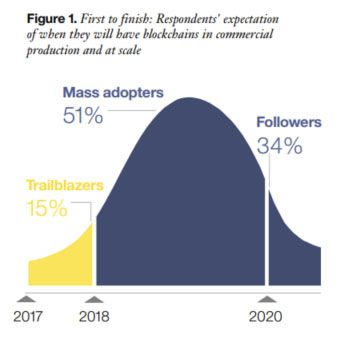»phone Chick 2F, 2014 TDN Rising Stars – Writeup Page
thoroughbreddailynews.com
» TDN Rising Stars – Writeup Page
October 14, 2016 - Keeneland, Race 10, Msw, USD $60,000, 6F
Phone Chick, F, 2, 2014 by Dialed In
1st Dam: Dixie Sheikh, by Dixie Union
2nd Dam: Pushing Fifty, by Forty Niner
3rd Dam: Amerigirl, by Drone
Owner: Michael House
Breeder: Alan S. Kline & American Equistock Inc. (MD)
Trainer: Ignacio Correas IV

Posted on October 17th, 2016
The Stars in Your Eyes

Credit: © 2005 The Nature Publishing Group
Our new Illusions article in the November 2016 issue of Scientific American Mind features a brain conundrum as old as science itself. Galileo Galilei, who many view as the first scientist of the modern age, could not trust his own eyes. He noticed that when he viewed a moon of Jupiter with the huge planet in its background, the moon appeared smaller than when he viewed the same moon as a bright spot against the black night sky. Leonardo Da Vinci, too, noticed that precision of vision varied with darks versus lights (though he noticed the effect on the painter’s canvas). Hermann von Helmholtz, the venerable German Physicist-Physician, recognized that the effect must have something to do with the brain, as he pondered the Irradiation Illusion.

In the article we describe some of the optical and neural effects that contribute to the superior size of light against dark in our eyes, as well as related brightness effects, such as in the illusion from Barton Anderson (University of Western Australia) and Jonathan Winawer (New York University) (see moving moon image above). We also discuss the neural underpinnings of these effects recently discovered by the labs of Jose-Manuel Alonso at SUNY College of Optometry, and David Fitzpatrick at the Max Planck Institute in Jupiter Florida, and the role they play in our everyday perception.
But these contrast effects do not tell the whole story. The context of how light and dark interact across space matters too, as Edward Adelson’s (MIT) incredible Argyle family of illusions show (below). Here, we see that the a diamond shaded in gray will appear light or dark depending on its surround, as well as the distance to the surround.
Edward Adelson SCIENCE • VOL. 262 • 24 DECEMBER 1993
Contrast Is Not Enough
Although contrast is critical to vision, Adelson demonstrates here that there are other unexplained ways that an object’s surface properties affect how we see light and dark. Adelson’s Argyle Illusion reveals that diamonds a1 and a2 appear very different in brightness although they are identical, whereas b1 and b2 appear more similar. The only difference between the top and bottom image is the gap between the vertical light and dark patterns, which for some unknown reason destroys the appearance of shading in the bottom image.
The views expressed are those of the author(s) and are not necessarily those of Scientific American.
ABOUT THE AUTHOR(S)

Stephen L. Macknik
Stephen L. Macknik is a professor of opthalmology, neurology, and physiology and pharmacology at SUNY Downstate Medical Center in Brooklyn, N.Y. Along with Susana Martinez-Conde and Sandra Blakeslee, he is author of the Prisma Prize-winning Sleights of Mind. Their forthcoming book, Champions of Illusion, will be published by Scientific American/Farrar, Straus and Giroux.
MARCOS LAINEZ, COURTESY OF SUNY DOWNSTATE MEDICAL CENTER
Latest News
Read More
Child's Play

Posted on October 17th, 2016
Exactly why people don't understand
I'M NOT TRYING TO SHOCK ANYONE USING THE WORD PUSSY OBVIOUSLY IT'S OK TALK AND REPEAT THE SPEECHES OF OUR LEADERS . IT WAS SOMETHING I COULD NOT BELIEVE HAD NOT BROUGHT UP YET THERE IS NO WAY HE HAS HANDED OUT A NONDISCLOSURE TO EVERY WOMAN IN 1FT SPACE OF HIM SUPER TINY HANDS DON'T REACH AS FAR . MAYBE LIVING IN LAS VEGAS WHERE IT'S NORMAL TO REALLY KNOW WHAT A CELEBRITY IS LIKE IN REAL LIFE WE ALL WORK KNOW PEOPLE WHO WORK WHERE YOU ALL COME AND ACT FOOLS EVEN IF YOU DON'T DRINK OR DO DRUGS CAUSE TIGER WOODS SHIT WAS LIKE OLD HAT ROUND HERE. DAMN TOOK A FEW YEARS KNEW HE WAS A PIECE OF SHIT. WHY GET MARRIED I DON'T GET IT. I AM SORRY BUT I DO NOT UNDERSTAND WHY THE HELL GET MARRIED TRACK RECORD OF OLD RICH DUDES IS PRETTY MUCH FERTILE BREEDING GROUND FOR ANY TYPE OF WOMAN WHO YOU WANT HELL JUST BUY ONE TO YOUR SPECIFICATIONS. OF COURSE I AM JOKING BUT JUST LIKE I'M NOT WORRIED ABOUT ANY OF YOU THINKING I BUY HUMANS. GOT A GREAT HOOKUP FOR WEED AND MY 15 TO 21 YR OLD EASTERN EUROPE GIRL HOOKUP JUS GOT SOME GOOD SHIT IN TOO IF YOU NEED EITHER ONE I GOTCHA. HILLARY IS SWINGING BY HERE FOR A QP AFTER THE DEBATE BILL HE GOES BACK WITH MY E. EURO HOOKUP HE WORKS WITH THEIR FOUNDATION. NOW SOME PEOPLE ARE GOING TO BE DUMB ENOUGH TO BELIEVE THAT. I THOUGHT SOCIETAL NORM WAS AT LEAST WE DON'T NOMINATE AND CONTINUE TO SUPPORT THEM TO BE PRESIDENT OF THE UNITED STATES OF 42% OF PEOPLE AS IN EVERY TIME I SEE TEN PEOPLE 4 ARE THIS FUCKING STUPID AND I SAID LAUGH NOW REPUBLICAN PARTY U JUST ADOPTED A GRENADE AND HE WILL WIN BECAUSE OF THE STARK CONTRAST OF PARTIES FUNDAMENTAL DIFFERENCE ONE EMBRACES FACTS AND LAWS AND LEARNING ABOUT STUFF AND THE OTHER USED TO BUT UNDERSTANDING ISSUES IS ANTI GOVERNMENT NOW LIKE A BADGE OF HONOR FOR PEOPLE LAUGH NOW BUT TRUMP IS AT 7% ALREADY AND 13 OR SO MONTHS GOOD LUCK. THEY WILL NOMINATE HIM AND IT'S GOING TO BE THE BIGGEST FUCKING GRADE A SHIT SHOW HE WILL SAY ANYTHING I ADVISED THAT HE STAY AWAY FROM DEBATE BC HE IS A FUCKING IDIOT WHO SHOULD NEVER BE PAST 7% SO IT'S NOT POLITICAL FOR ME I FUCKING KNOW WHO THE MAN IS FUCKING HATED HIM MY WHOLE LIFE HE IS STRAIGHT UP CREEP. . DISGUSTING MAN. THE FACT THAT IF HE WINS I'M MOVING TO MEXICO NOT BC I WON'T BE ABLE TO LIVE UNDER HIS LAWS I'D BENEFIT INSANE AMOUNT YOU WANT TO PAY TAXES FOLKS GAMBLE FOR A LIVING YOU PAY ENORMOUS AMOUNT OF TAXES AND MY WORK IF I TAKE 100 BUCK TO BET ON A TRACK IN LEXINGTON KENTUCKY I'M PAYING MORE INTO LEXINGTON SPENDING MONEY WITH TAXES THERE AND TAKEOUT PLUS THIS END WITH ONE DAY AND 100 BUCKS THEN A PERSON IN EITHER CITY OR BOTH TOGETHER ACTUALLY HAVE $1 OF THERE TAX TO FUND THE INFRASTRUCTURE AND PAY FOR THINGS I KNOW WHAT MY TAX DOLLARS PAY FOR AND WHAT THEY WOULD PAY FOR WITH TRUMPS HANDS ON IT NO WAY I'M NOT GIVING THAT MAN A DOLLAR . I'M CRITICAL OF THE UNITED STATES FOR NOT CRACKING DOWN ON MY INDUSTRY I'D LOVE TO NOT HAVE TO COMPETE WITH PEOPLE WHO KNOW THAT YOU CAN RIP PEOPLE OFF AND THEY HAVE NO LEGAL RECOURSE TRUST ME I'M ALL FOR MORE LIKE HONG KONG JOCKEY CLUB. PEOPLE ARE YOU GUESSED IT JUST TRULY UNDER AND MIS INFORMED ABOUT THE AMOUNT OF CHARITY AND SHEER MONEY BILLIONS A STATE IN MONEY BY LETTING BOB LEGALLY BET $1000 ON LAS VEGAS ______ NO IDEA WHAT OR IF WE ARE AUTOMATICALLY THE RAIDERS HERE BUT I KNOW THAT THE NHL AND RAIDERS OWNERS NEED TO COLLABORATE WITH EACH OTHER SO WE CAN USE LOGIC AND HAVE OUR TEAMS THE SAME COLOR SO HALF THE CITY ISN'T IN NFL GAME WEARING SILVER AND BLACK AND HALF OF US RESIDENTS IN ORANGE OR WHATEVER THE NHL TEAM WILL BE. I THINK IT IS PRUDENT TO HAVE REASONABLY WELL THOUGHT OUT PLANS FOR THINGS LIKE THAT IT'S NOT CRAZY TO UNDERSTAND WHY YOU WANT SAME COLOR IS ALL THE BULLSHIT WE BOUGHT APPROVING IT. TELL ME SPORTS DON'T MAKE A DIFFERENCE TELL THAT TO MY HOME CLEVELAND GOING FOR ANOTHER ONE IN SAME YEAR CUBS INDIANS TOLD YOU ALL IT WOULD WORK OUT THAT WAY BEFORE I WOULD SAY THAT. IRONICALLY THE TWO TEAMS AND FAN BASE CLEVELAND FANS CUBS FANS COMPARED ALL THE TIME BEFORE YOU KNOW IT WOULD BE IRONIC BC NOT ONCE WILL A FAN EVER THINK THEY ARE GOING TO WIN DON'T SPEAK ABOUT WINNING WE KNOW WE WON'T NO WE KNOW MORE WE WILL LOSE MORE SPECTACULAR. IT'D BE WEIRD OH WELL CHAMPIONS THING KIND OF USED TO THAT ALREADY BUT TAKE ANOTHER.
REALLY THOUGH

Posted on October 17th, 2016
Watch "Race Replay: 2016 $1M G1 Pattison Canadian International" on YouTube
Race Replay: 2016 $1M G1 Pattison Canadian International

Posted on October 16th, 2016
Belmont 8


Posted on October 16th, 2016
15 Percent of Big Banks Will Be Using Blockchain by 2017, Says IBM
In Brief
- IBM surveyed 200 global banks and financial institutions as part of two recently released studies.
- The widespread use of Blockchain could lead to more secure, efficient banking experiences.
Recent reports by IBM have revealed that by 2017, 15 percent of big banks worldwide and 14 percent of major financial institutions will be using Blockchain technology.
The tech giant conducted and released two studies, “Leading the Pack in Blockchain Banking: Trailblazers Set the Pace" and “Blockchain Rewires Financial Markets: Trailblazers Take the Lead," which surveyed 200 global banks and financial institutions. Though a lot of the banks are still testing the waters, IBM reported that about 66 percent of those surveyed plan to have incorporated Blockchain into their commercial products within the next 4 years.

In an IBM press release, Likhit Wagle, Global Industry General Manager, IBM Banking and Financial Markets, said that being early birds in the Blockchain scene promises many advantages: “To start, first movers are setting business standards and creating new models that will be used by future adopters of Blockchain technology. We also discover that these early adopters are better at anticipation of disruption, fighting off new competitors along the way."
Because Blockchain is a distributed database (as opposed to one that is stored in a central system) and effective against tampering, it is the ideal transacting platform for banks and financial institutions. Changes to records made and observed in real-time would translate to lower costs, more efficient operations, and the elimination of pesky mishaps that happen under the current banking technology.
| Robert Sanders |
Get mind-blowing news & videos delivered right to your inbox!

Posted on October 16th, 2016
New Method of Stem Cell Therapy Shown to Regenerate Heart Tissue
In Brief
- A new way of transplanting stem cells into a damaged heart could be a way of reversing heart disease.
- New developments are continually finding ways of helping people to regenerate and heal in ways never before possible.
Matters of the Heart
A study by researchers from Shinshu University, published in Nature, proposes a new way to fix, previously irreversible, heart damage. The process involves transplanting stem cells to induce cardiac self-repair. They’ve managed to transplant primate heart stem cells into another primate, successfully resulting to improved cardiac function.
Stem cell transplant isn’t exactly a new development for the treatment of heart problems. As with many transplants there is the risk of being identified as a pathogen by the recipient’s immune system. According to the research, the key is a protein found on the surface of donor stem cells.

Usually, this protein is what the immune system uses to normally target harmful strangers. If the protein on the donor stem cells match those of the recipient, the problem is solved. Non-native cells would no longer be attacked by the recipient’s immune system.
Furthermore, using a relatively mild immunosuppressant, the grafted stem cells were able to survive for 12 weeks. The results were improved functioning in the damaged heart cells.
The ability to repair damaged heart cells even before symptoms of cardiac problems arise, makes the leading cause of death in the United States (and the world) more manageable.
Technology and the Body
The transplant of heart cells still has room for improvement. The researchers found that hearts with grafted cells tend to beat more irregularly. While the irregular beating was not severe enough to cause harm, it warrants further research.
Such advances in biotechnology have began to improve medical research. Ethical issues notwithstanding, stem cells have proven its own merit over the past few months with applications in Parkinson’s research, Alzheimer’s treatment, and even for stroke and diabetes.
And it’s not just limited to stem cells.
Medical advances using various technology have, literally, allowed us to restore our bodies — from blood vessels and bones to egg cells.
We’re more capable than ever to repair our own bodies. While we’re probably still long ways off from solving many of the biggest health issues known to man, we are getting there faster than ever.
| Author Dom Galeon | |
| Editor Patrick Caughill | |
Get mind-blowing news & videos delivered right to your inbox!

Posted on October 16th, 2016





